THCA Benefits: How This Molecule's Structure Affects Your Endocannabinoid System
The cannabis plant has been revered for its therapeutic properties for thousands of years, but only recently have scientists begun to understand the intricate molecular mechanisms behind its healing potential. While much attention has focused on THC and CBD, a lesser-known cannabinoid is emerging as a powerful therapeutic compound in its own right: tetrahydrocannabinolic acid, or THCA.
Raw cannabis contains predominantly THCA rather than THC, and this precursor molecule offers a unique therapeutic profile that's distinctly different from its decarboxylated counterpart. Unlike THC, THCA benefits include powerful anti-inflammatory, neuroprotective, and antiemetic properties without the psychoactive effects that many patients prefer to avoid.
The key to understanding THCA therapeutic potential lies in examining how this molecule's unique structure interacts with our body's endocannabinoid system. This complex network of receptors, enzymes, and endogenous compounds plays a crucial role in maintaining homeostasis throughout the body, and THCA endocannabinoid system interactions reveal why raw cannabis preparations may offer therapeutic advantages over heated cannabis products.
This comprehensive exploration will delve into the molecular science behind THCA effects, examining how its distinctive chemical structure enables specific therapeutic benefits while avoiding unwanted psychoactive side effects. We'll explore the research-backed evidence supporting THCA medical benefits and discuss how understanding these molecular interactions can help patients and healthcare providers make more informed decisions about cannabis-based therapies.
THCA's Unique Molecular Properties
The molecular structure of THCA fundamentally determines its biological activity and therapeutic potential. Understanding these structural characteristics provides crucial insights into why THCA effects differ so significantly from other cannabinoids, particularly THC.
THCA's most distinctive structural feature is its carboxylic acid group (-COOH), which dramatically alters the molecule's properties compared to THC. This carboxyl group makes THCA significantly more polar than THC, affecting how the molecule interacts with cellular membranes, crosses biological barriers, and binds to various receptors throughout the body. The increased polarity reduces THCA's ability to cross the blood-brain barrier efficiently, which largely explains why THCA lacks the psychoactive properties associated with THC.
The molecular weight of THCA (358.47 g/mol) is approximately 44 atomic mass units heavier than THC (314.46 g/mol) due to the additional carboxylic acid group. This size difference influences the molecule's three-dimensional shape and how it fits into various receptor binding sites. The larger, more polar structure means THCA interacts differently with cannabinoid receptors, often showing reduced affinity for CB1 receptors (primarily responsible for psychoactive effects) while maintaining or even enhancing interactions with other therapeutic targets.
These structural differences also affect THCA's stability and metabolism. The carboxylic acid group makes THCA more stable in its raw form but also more susceptible to decarboxylation when exposed to heat, light, or prolonged storage. This thermal sensitivity is why raw cannabis preparations must be carefully handled to preserve THCA content and maintain therapeutic efficacy.
The molecule's unique geometry allows for selective binding patterns that contribute to its therapeutic profile. THCA shows different receptor affinities compared to THC, with research suggesting stronger interactions with certain inflammatory pathways and weaker binding to receptors associated with psychoactivity. This selective binding profile enables THCA medical benefits without the cognitive side effects that limit THC's therapeutic applications for many patients.

Endocannabinoid System Overview
The endocannabinoid system (ECS) represents one of the most important regulatory networks in the human body, influencing everything from pain perception and inflammation to mood regulation and immune function. To understand how THCA endocannabinoid system interactions produce therapeutic effects, we must first examine the components and functions of this complex biological network.
The ECS consists of three primary components: cannabinoid receptors (primarily CB1 and CB2), endogenous cannabinoids (endocannabinoids like anandamide and 2-AG), and the enzymes responsible for synthesizing and degrading these compounds. CB1 receptors are predominantly located in the central nervous system, particularly in brain regions associated with cognition, memory, motor control, and pain processing. CB2 receptors are primarily found in immune cells and peripheral tissues, playing crucial roles in immune function and inflammatory responses.
Endocannabinoids are naturally produced by the body on-demand to maintain homeostasis. When the body detects imbalances in various physiological processes, it synthesizes endocannabinoids that bind to cannabinoid receptors to restore equilibrium. This system operates as a regulatory mechanism that helps maintain optimal functioning across multiple biological systems.
THCA's interaction with the endocannabinoid system differs significantly from other cannabinoids due to its unique molecular structure. While THCA shows relatively weak binding affinity to CB1 and CB2 receptors compared to THC, it influences the endocannabinoid system through alternative mechanisms. Research suggests THCA may modulate enzyme activity, affect endocannabinoid metabolism, and interact with other receptor systems that communicate with the ECS.
The molecule's selective binding patterns mean THCA can influence endocannabinoid system function without directly activating the primary receptors responsible for psychoactive effects. This selective modulation allows THCA to provide therapeutic benefits by enhancing the body's natural regulatory mechanisms without disrupting cognitive function or producing unwanted psychoactive side effects.
Understanding these interaction patterns helps explain why raw cannabis preparations containing THCA may offer unique therapeutic advantages. By working with the endocannabinoid system's natural regulatory processes rather than overwhelming specific receptors, THCA health effects support homeostasis in a more subtle but potentially more sustainable manner than highly psychoactive cannabinoids.
Research-Backed THCA Benefits
Scientific research into THCA therapeutic potential has revealed compelling evidence supporting multiple medical applications. These THCA health effects demonstrate the molecule's unique therapeutic profile and its potential as a valuable addition to medical cannabis treatments.
Anti-Inflammatory Properties
THCA's anti-inflammatory effects represent one of its most well-documented therapeutic benefits. Research has demonstrated that THCA significantly reduces inflammatory markers through multiple molecular pathways, offering potential advantages over traditional anti-inflammatory medications.
Studies investigating THCA's anti-inflammatory mechanisms have revealed that the molecule inhibits key inflammatory enzymes, including cyclooxygenase (COX) enzymes and lipoxygenase pathways. These enzymes are responsible for producing pro-inflammatory compounds like prostaglandins and leukotrienes, which contribute to pain, swelling, and tissue damage in inflammatory conditions.
In laboratory studies, THCA has shown superior anti-inflammatory activity compared to several conventional anti-inflammatory compounds. Research published in biological chemistry journals has demonstrated that THCA can reduce inflammatory cytokine production by up to 70% in certain experimental models, suggesting significant therapeutic potential for inflammatory conditions.
The molecule's anti-inflammatory effects appear to be particularly pronounced in neuroinflammatory conditions, where THCA has shown the ability to reduce microglial activation and decrease inflammatory damage to brain tissue. This neuroinflammatory modulation contributes to THCA's neuroprotective properties and suggests potential applications for neurodegenerative diseases characterized by chronic inflammation.
Neuroprotective Effects
THCA's neuroprotective properties have garnered significant attention from researchers investigating cannabinoid-based treatments for neurological conditions. The molecule's ability to protect brain cells from damage while supporting neural function offers promising therapeutic applications for various neurodegenerative diseases.
Research has demonstrated that THCA provides neuroprotection through multiple mechanisms, including antioxidant activity, anti-inflammatory effects, and direct cellular protection. Studies have shown that THCA can reduce oxidative stress in brain tissue, protecting neurons from damage caused by reactive oxygen species and free radicals that contribute to aging and neurodegenerative processes.
The molecule's neuroprotective effects extend to protecting against excitotoxicity, a process where excessive neural stimulation leads to cell death. THCA has shown the ability to modulate neurotransmitter systems in ways that reduce excitotoxic damage while maintaining normal neural communication, suggesting potential applications for conditions like stroke, traumatic brain injury, and neurodegenerative diseases.
Animal studies investigating THCA's neuroprotective effects have shown promising results in models of Parkinson's disease, Alzheimer's disease, and Huntington's disease. While human clinical trials are still needed, preclinical evidence suggests that THCA's unique molecular structure allows it to cross the blood-brain barrier sufficiently to provide meaningful neuroprotective effects without producing significant psychoactive side effects.
Antiemetic Properties
THCA's antiemetic (anti-nausea and anti-vomiting) properties represent another well-researched therapeutic application. Clinical and preclinical studies have demonstrated that THCA can effectively reduce nausea and vomiting through mechanisms that differ from traditional antiemetic medications.
Research investigating THCA's antiemetic effects has revealed that the molecule modulates neurotransmitter systems involved in nausea and vomiting, particularly serotonin pathways in the brainstem and gastrointestinal tract. THCA appears to influence 5-HT3 receptors, which play crucial roles in triggering nausea and vomiting responses, providing antiemetic effects without the sedation or cognitive impairment associated with many conventional antiemetic drugs.
Studies examining THCA's effectiveness for chemotherapy-induced nausea and vomiting have shown promising results, with patients reporting significant improvements in both nausea severity and quality of life. The molecule's antiemetic effects appear to be dose-dependent and may be enhanced when combined with other cannabinoids in whole-plant preparations.
The antiemetic properties of THCA extend beyond cancer treatment applications, with research suggesting potential benefits for morning sickness during pregnancy, motion sickness, and nausea associated with various medical conditions. The non-psychoactive benefits of THCA make it particularly attractive for patients who need antiemetic relief without cognitive impairment.
Potential Anti-Seizure Effects
Emerging research suggests that THCA may possess anti-seizure properties, adding to the growing body of evidence supporting cannabinoids as therapeutic options for epilepsy and seizure disorders. While research is still in early stages, preliminary findings indicate that THCA's unique molecular properties may offer advantages for certain types of seizures.
Studies investigating THCA's anticonvulsant effects have revealed that the molecule may influence neuronal excitability through mechanisms distinct from other anti-seizure cannabinoids. THCA appears to modulate ion channels and neurotransmitter systems involved in seizure generation and propagation, potentially offering therapeutic benefits without the psychoactive side effects that limit the use of THC in pediatric populations.
Patient testimonials and case studies have reported improvements in seizure frequency and severity with THCA-rich cannabis preparations, particularly in treatment-resistant epilepsy cases. While anecdotal evidence is encouraging, controlled clinical trials are needed to establish THCA's efficacy and optimal dosing for seizure disorders.
The molecule's potential anti-seizure effects may be particularly relevant for specific seizure types or patient populations where traditional anticonvulsant medications have proven ineffective or cause intolerable side effects. THCA's favorable side effect profile and potential for combination therapy with other anticonvulsants make it an intriguing therapeutic option worthy of further investigation.
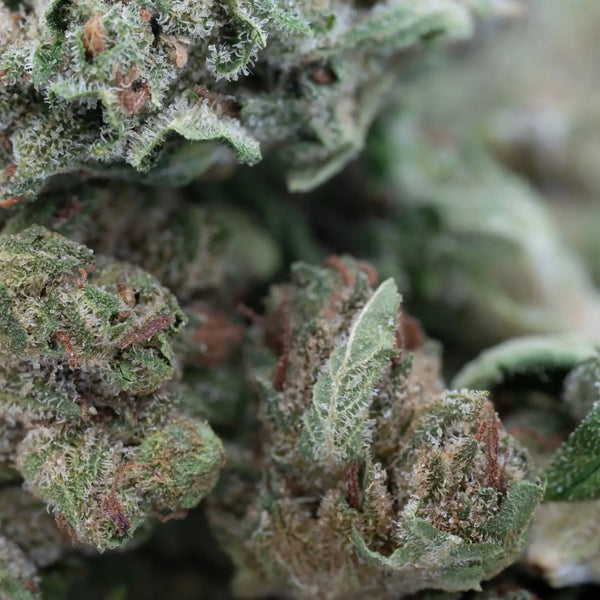
How THCA's Structure Enables These Benefits
The therapeutic benefits of THCA are directly attributable to its unique molecular structure, which enables specific interactions with biological systems while avoiding unwanted side effects. Understanding these structure-activity relationships provides crucial insights into how THCA benefits are produced at the molecular level.
THCA's carboxylic acid group fundamentally alters how the molecule interacts with various receptor systems throughout the body. This structural feature increases the molecule's polarity and hydrogen bonding capacity, allowing for specific interactions with protein targets that are inaccessible to more lipophilic cannabinoids like THC. The increased polarity also affects how THCA distributes throughout the body, concentrating in different tissues and organs compared to THC.
The molecule's larger size and altered geometry create a different binding profile at cannabinoid receptors and other therapeutic targets. While THCA shows reduced affinity for CB1 receptors (contributing to its non-psychoactive nature), it may have enhanced interactions with other receptor systems involved in inflammation, neuroprotection, and other therapeutic effects. This selective receptor binding allows THCA to produce specific therapeutic benefits without activating pathways associated with psychoactivity.
THCA's structural stability in its native form but instability when exposed to heat creates unique opportunities for controlled therapeutic applications. Raw cannabis preparations can preserve THCA content to maximize therapeutic benefits, while controlled decarboxylation can convert THCA to THC when psychoactive effects are desired. This structural flexibility allows for precise control over therapeutic outcomes based on preparation and administration methods.
The molecule's blood-brain barrier penetration characteristics, influenced by its polar carboxylic acid group, create a unique therapeutic profile for neurological applications. While THCA doesn't cross the blood-brain barrier as readily as THC, it achieves sufficient brain concentrations to provide neuroprotective and anti-inflammatory effects without producing significant psychoactivity. This selective brain penetration enables therapeutic benefits for neurological conditions while maintaining cognitive function.
THCA's structural properties also enable synergistic effects with other cannabinoids and terpenes in whole-plant preparations. The molecule's unique receptor binding profile and metabolic characteristics complement other cannabis compounds, potentially enhancing therapeutic efficacy through the "entourage effect." This structural compatibility with other plant compounds supports the use of whole-plant preparations over isolated compounds for many therapeutic applications.
Bioavailability and Absorption
Understanding how the body processes THCA is crucial for optimizing therapeutic outcomes and ensuring patients receive maximum benefit from THCA therapeutic applications. The molecule's unique structural properties significantly influence its absorption, distribution, metabolism, and elimination from the body.
THCA's polar nature affects its absorption characteristics across different administration routes. When consumed orally, THCA must navigate the acidic environment of the stomach and the alkaline conditions of the small intestine, where its carboxylic acid group influences solubility and membrane transport. The molecule's polarity generally reduces absorption compared to more lipophilic cannabinoids, but this can be enhanced through proper formulation and delivery methods.
Sublingual administration offers advantages for THCA absorption by allowing direct absorption through the oral mucosa, bypassing first-pass metabolism in the liver. This route can improve bioavailability and provide faster onset of therapeutic effects compared to oral administration. The molecule's polar nature actually facilitates sublingual absorption, as the aqueous environment under the tongue can effectively dissolve THCA-containing preparations.
First-pass metabolism represents a significant consideration for oral THCA administration. When THCA passes through the liver after oral consumption, it may undergo decarboxylation due to body heat and enzymatic processes, converting some THCA to THC. This conversion can alter the therapeutic profile and introduce psychoactive effects that patients may wish to avoid. Understanding and managing first-pass metabolism is crucial for maintaining THCA's therapeutic benefits.
Several factors affect THCA bioavailability, including individual genetic variations in drug metabolism, stomach pH, presence of food, and concurrent medications. Patients with certain genetic polymorphisms may metabolize THCA differently, requiring personalized dosing approaches. Taking THCA with food, particularly fatty meals, may enhance absorption despite the molecule's polar nature by improving overall cannabinoid bioavailability through enhanced mixed micelle formation.
Optimal consumption methods for THCA focus on preserving the molecule's structure while maximizing therapeutic delivery. Raw cannabis juicing, tinctures prepared with minimal heat, and specialized extraction methods that preserve THCA content offer the best therapeutic potential. These preparation methods maintain THCA's unique molecular structure and therapeutic properties while optimizing bioavailability through appropriate delivery systems.
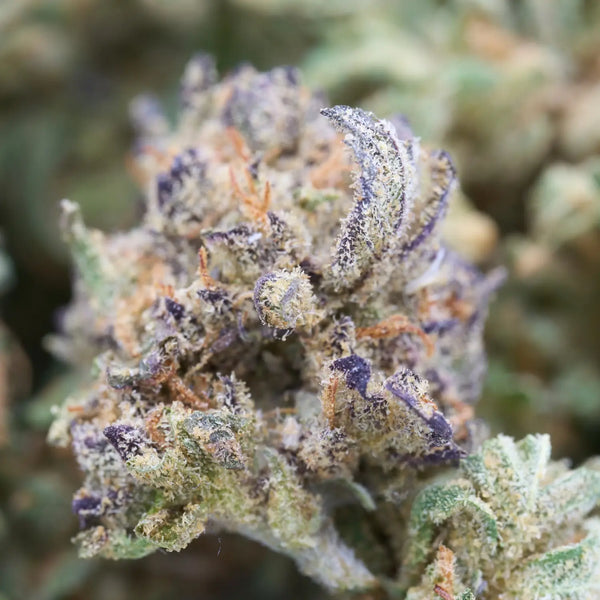
Dosage and Administration
Determining optimal THCA dosing requires understanding the molecule's unique pharmacological properties and individual patient factors that influence therapeutic response. Unlike psychoactive cannabinoids where impairment provides clear dosing feedback, THCA medical benefits occur without obvious psychoactive markers, requiring more nuanced approaches to dose optimization.
Therapeutic dosage ranges for THCA vary significantly based on the condition being treated, individual patient factors, and the specific preparation being used. Research suggests that effective doses may range from 10-50mg daily for general wellness applications, while therapeutic applications for specific medical conditions may require higher doses ranging from 50-200mg or more daily. These dosing ranges are based on limited clinical data and patient reports, highlighting the need for more comprehensive dosing studies.
Individual variation factors significantly influence THCA dosing requirements, including body weight, metabolic rate, severity of the condition being treated, and concurrent medications. Patients with faster metabolisms may require higher or more frequent doses, while those with compromised liver function may need lower doses due to altered metabolism. Age-related changes in drug metabolism also affect optimal dosing, with elderly patients often requiring lower doses than younger adults.
Administration timing considerations play crucial roles in optimizing THCA therapeutic effects. For anti-inflammatory applications, consistent daily dosing may provide the best results by maintaining steady therapeutic levels. For antiemetic uses, dosing before anticipated nausea triggers (such as before chemotherapy) may provide optimal protective effects. Some patients benefit from split dosing throughout the day to maintain consistent therapeutic levels.
Building tolerance to THCA appears to be less significant than with psychoactive cannabinoids, but some patients may experience reduced effects with prolonged use. However, the molecule's therapeutic effects may actually improve over time as the endocannabinoid system adjusts to supplementation. This suggests that THCA may be suitable for long-term therapeutic use without the tolerance concerns associated with THC.
Safety considerations for THCA dosing include potential interactions with other medications, particularly those metabolized by liver enzymes that also process cannabinoids. Patients taking blood thinners, seizure medications, or other drugs with narrow therapeutic windows should work closely with healthcare providers to monitor for interactions. Starting with low doses and gradually increasing allows patients and providers to assess therapeutic response while minimizing potential adverse effects.
Current Research Limitations
While research into THCA's therapeutic potential shows promising results, significant limitations currently restrict our understanding of this cannabinoid's full medical applications. These research gaps highlight the need for more comprehensive studies to establish THCA's role in modern medicine and optimize therapeutic applications.
The most significant limitation facing THCA research is the scarcity of human clinical trials. Most current evidence comes from preclinical studies using cell cultures and animal models, which may not accurately predict human therapeutic responses. While animal studies provide valuable insights into potential mechanisms and safety profiles, human clinical trials are essential for establishing efficacy, optimal dosing, and safety profiles in real-world therapeutic applications.
Regulatory challenges present substantial barriers to conducting comprehensive THCA research. Cannabis scheduling restrictions in many jurisdictions limit researchers' access to high-quality study materials and complicate the approval process for human clinical trials. These regulatory barriers have historically slowed cannabis research progress and continue to limit the scope and quality of available studies investigating THCA's therapeutic potential.
Standardization issues plague current THCA research, with significant variations in extraction methods, purity levels, and analytical testing across different studies. This lack of standardization makes it difficult to compare results across research groups and establish consistent therapeutic protocols. The absence of pharmaceutical-grade THCA preparations further complicates clinical research efforts.
Funding limitations represent another significant barrier to advancing THCA research. Traditional pharmaceutical companies have limited incentives to invest in cannabinoid research due to patent challenges and regulatory uncertainties. Government funding for cannabis research has historically been restricted, though recent policy changes in some jurisdictions are beginning to improve research funding opportunities.
Future research directions should prioritize well-designed human clinical trials investigating THCA's therapeutic applications across various medical conditions. These studies should include dose-response relationships, optimal administration methods, safety profiles, and potential drug interactions. Long-term studies are particularly needed to assess the safety and efficacy of chronic THCA use for conditions requiring extended treatment.
Practical Applications
The unique therapeutic properties of THCA create numerous practical applications across medical cannabis programs, wellness initiatives, and integrative healthcare approaches. Understanding these applications helps patients, healthcare providers, and policymakers make informed decisions about incorporating THCA health effects into therapeutic protocols.
Medical cannabis programs increasingly recognize THCA's therapeutic potential, with several jurisdictions specifically including THCA-rich preparations in their approved product lists. These programs allow qualified patients to access standardized THCA products for various medical conditions, providing safer and more controlled therapeutic options compared to unregulated sources. The inclusion of THCA in medical programs acknowledges its distinct therapeutic profile and non-psychoactive nature.
Wellness applications for THCA extend beyond treating specific medical conditions to include preventive healthcare and general health optimization. Many wellness-focused consumers use THCA as a daily supplement to support immune function, reduce inflammation, and promote general well-being. The molecule's favorable safety profile and lack of psychoactive effects make it suitable for integration into daily wellness routines.
The preventive healthcare potential of THCA represents an exciting application area, with research suggesting that regular THCA supplementation may help prevent various health conditions by supporting endocannabinoid system function and reducing chronic inflammation. This preventive approach aligns with growing trends toward proactive healthcare and may reduce long-term healthcare costs by preventing disease progression.
Integration with conventional medicine presents both opportunities and challenges for THCA applications. While some healthcare providers are beginning to incorporate cannabinoid therapies into treatment protocols, many remain hesitant due to limited clinical evidence and regulatory concerns. Successful integration requires ongoing education, standardized products, and clear clinical guidelines for healthcare providers.
Specific therapeutic applications showing particular promise include THCA's use in inflammatory conditions like arthritis and inflammatory bowel disease, neuroprotective applications for neurodegenerative diseases, and antiemetic uses in cancer care and pregnancy-related nausea. These applications leverage THCA's unique molecular properties to provide therapeutic benefits without the limitations associated with psychoactive cannabinoids.

Frequently Asked Questions
Q: What makes THCA different from THC in terms of therapeutic benefits? A: THCA's carboxylic acid group creates fundamental differences in how the molecule interacts with the body. While THC produces psychoactive effects through CB1 receptor activation, THCA benefits include anti-inflammatory, neuroprotective, and antiemetic properties without psychoactivity. THCA effects allow for therapeutic applications in situations where cognitive impairment would be problematic.
Q: How does THCA interact with the endocannabinoid system? A: THCA endocannabinoid system interactions differ from other cannabinoids due to THCA's weak binding to CB1 and CB2 receptors. Instead, THCA effects modulate the endocannabinoid system indirectly through enzyme interactions, alternative receptor pathways, and endocannabinoid metabolism effects, providing therapeutic benefits while supporting natural homeostatic processes.
Q: What conditions show the most promise for THCA treatment? A: Research supports THCA therapeutic applications for inflammatory conditions, neurodegenerative diseases, nausea and vomiting, and potentially seizure disorders. The molecule's anti-inflammatory and neuroprotective properties make THCA medical benefits particularly promising for conditions like arthritis, Parkinson's disease, inflammatory bowel disease, and chemotherapy-induced nausea.
Q: How should THCA be consumed to maintain its therapeutic properties? A: THCA requires careful handling to prevent decarboxylation into THC. Raw cannabis preparations, cold-pressed juices, tinctures prepared without heat, and specialized extraction methods preserve THCA content. Avoiding heat, light, and prolonged storage helps maintain THCA health effects.
Q: Are there any side effects or safety concerns with THCA use? A: THCA generally shows excellent safety profiles in available studies, with minimal side effects reported. The non-psychoactive benefits of THCA eliminate cognitive impairment concerns, though potential drug interactions and individual sensitivities should be considered. Patients taking other medications should consult healthcare providers before starting THCA therapeutic applications.
Q: What's the optimal dosing for THCA therapeutic applications? A: THCA dosing varies based on the condition treated and individual factors, with general ranges from 10-200mg daily. THCA medical benefits often follow dose-response relationships, with higher doses potentially needed for acute conditions. Starting with low doses and gradually increasing allows for optimal therapeutic response while monitoring for any adverse effects.
Conclusion
The emerging science of THCA reveals a cannabinoid with remarkable therapeutic potential, offering unique molecular advantages that distinguish it from other cannabis compounds. Through its distinctive carboxylic acid structure, THCA provides THCA benefits that include powerful anti-inflammatory, neuroprotective, and antiemetic effects without the psychoactive limitations that restrict other cannabinoids' therapeutic applications.
The molecule's selective interactions with the endocannabinoid system demonstrate how subtle structural differences can create profound therapeutic distinctions. By working with the body's natural regulatory mechanisms rather than overwhelming specific receptors, THCA effects support homeostasis in ways that may prove more sustainable and beneficial than conventional pharmaceutical approaches for many conditions.
Research-backed evidence supporting THCA's therapeutic applications continues to grow, with studies demonstrating significant benefits for inflammatory conditions, neurological disorders, and various other medical applications. While current research limitations highlight the need for more comprehensive human clinical trials, existing evidence strongly suggests that THCA represents a valuable addition to the therapeutic cannabinoid arsenal.
The practical implications of THCA's unique properties extend far beyond individual therapeutic applications. As medical cannabis programs evolve and healthcare providers become more familiar with cannabinoid therapies, THCA's favorable safety profile and non-psychoactive benefits position it as an ideal therapeutic option for patients who need cannabinoid benefits without cognitive impairment.
Looking toward the future, THCA therapeutic potential appears limitless. As research methodologies improve and regulatory barriers diminish, we can expect to see more comprehensive studies establishing optimal therapeutic protocols, safety profiles, and clinical applications. The molecule's unique structure-activity relationships suggest that targeted therapeutic applications may be developed that maximize THCA benefits while minimizing any potential drawbacks.
The promise of THCA lies not just in its current therapeutic applications, but in its potential to reshape how we approach cannabinoid medicine. By demonstrating that THCA medical benefits can be achieved without psychoactive effects, THCA opens new possibilities for cannabis integration into mainstream healthcare. This integration potential, combined with THCA health effects and impressive therapeutic profile, positions this molecule at the forefront of the next generation of cannabinoid-based medicines.
For patients, healthcare providers, and researchers interested in exploring THCA therapeutic potential, the key lies in understanding how molecular structure determines biological activity. This fundamental relationship between THCA's unique chemical properties and THCA effects provides the foundation for optimizing therapeutic applications and developing new treatment approaches that harness the full potential of this remarkable cannabinoid.
The future of cannabinoid medicine is bright, and THCA benefits ensure it will play a central role in advancing therapeutic applications while maintaining the safety and tolerability profiles that patients and healthcare providers demand. As our understanding of these molecular relationships deepens, THCA medical benefits will undoubtedly continue to expand, offering new hope for patients seeking effective, safe, and non-psychoactive benefits therapeutic options.

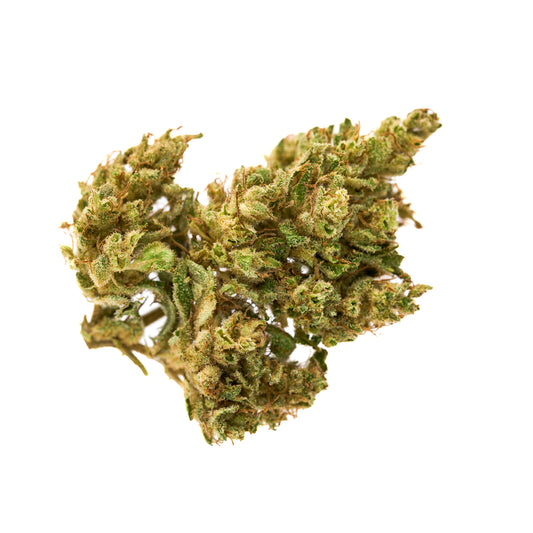
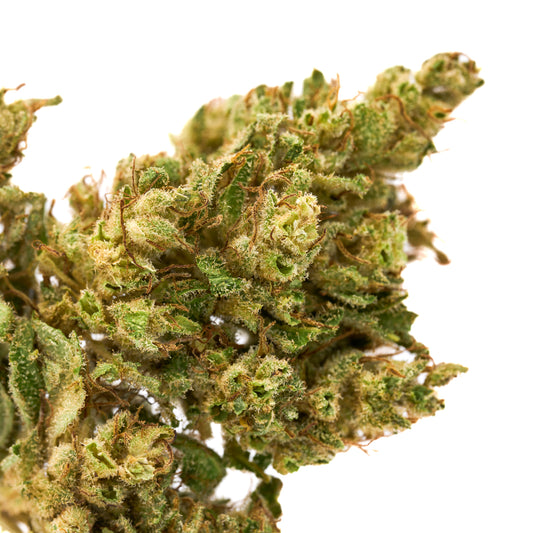

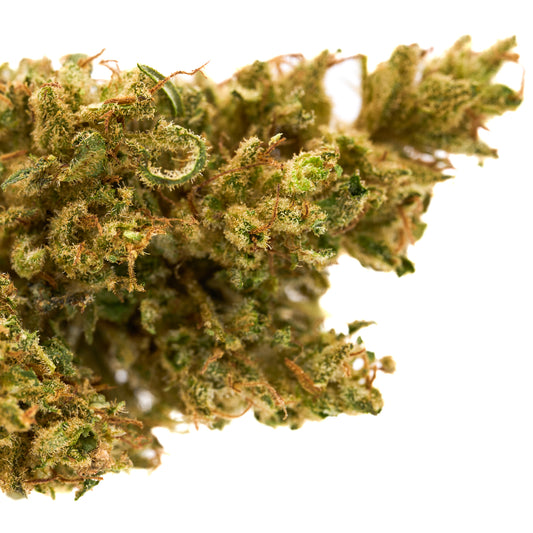

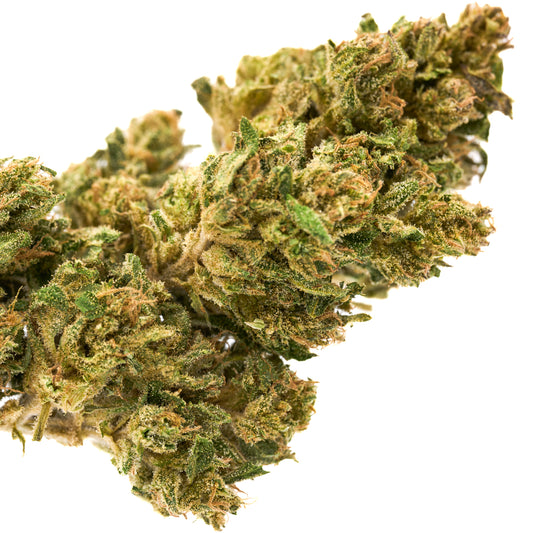





Leave a comment
Please note, comments need to be approved before they are published.